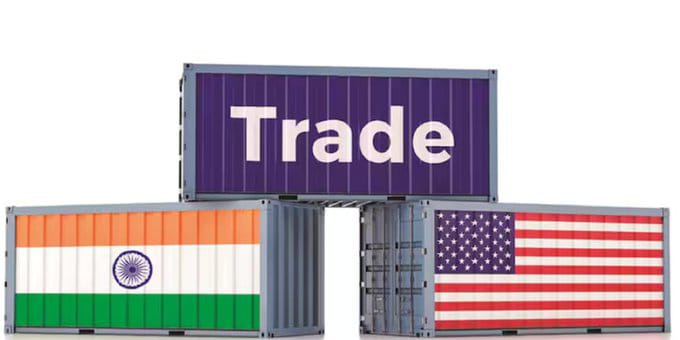
India trying for U.S. trade deal by July 8 deadline
NEW DELHI : A team of negotiators from India is in the U.S. for at least a two-day trip to conduct final negotiations for a ‘mini trade deal’ before the July 8, 2025 deadline elapses. The top items on the agenda, and the main hindrances to an agreement, are the entry of genetically-modified (GM) crops and cow milk into India, and the removal of the reciprocal tariffs imposed by the U.S.
The Indian negotiating team led by Chief negotiator and Special Secretary-Commerce Rajesh Agrawal reached Washington to commence two-day deliberations on Thursday, mainly to resolve current bilateral trade issues so that the two sides agree on an interim deal, paving the way for the first tranche of a proposed Bilateral Trade Agreement (BTA) by September-October 2025, they said, requesting anonymity. After the conclusion of the first tranche, the two parties will negotiate a comprehensive free trade agreement (FTA) to double the bilateral trade to $500 billion by 2030
According to them, initial negotiations between India and the US are focused on current issues. For the US, India’s high tariff barriers are the cause of its major trade deficit with the South Asian country. It is asking India to eliminate all tariff (nearly zero) and non-tariff barriers for most American goods, including automobiles, medical devices and agricultural products. According to the commerce ministry’s data, India enjoyed a $41.18 billion merchandise trade surplus with the US in 2024-25.
On the other hand, India’s demands are related to “greater and preferential market access” for Indian goods, they said. India’s asks are threefold. First, it wants the US to withdraw reciprocal tariffs on its goods immediately after the interim deal. This includes both the 10% “baseline” levy imposed by the Trump administration on all countries (including India) from April 5 and the proposed addition of 16% country-specific reciprocal tariff on Indian goods from July 9.
Second, India wants the US to withdraw the abnormally high safeguard duties imposed on Indian steel, aluminium, automobiles and auto parts, they said. The third ask of New Delhi pertains to MFN (most favoured nation) rates. As India is asked to reduce MFN tariffs on American merchandise to nearly zero, India wants Washington to commit the same on the principle of reciprocity, they added.
Experts said negotiations so far are on the right direction as both partners aim at mutually beneficial outcomes of the talks. “This trade deal is crucial for both partners as the US is the world’s biggest market and India is the world’s fastest growing major economy. A comprehensive bilateral trade agreement between the two that tackles all outstanding issues will take time, hence the two countries could address their immediate concerns through an early harvest deal and build therein provisions for negotiating a comprehensive free trade agreement,” said Agneshwar Sen, trade policy leader at consultancy firm EY India.
Another trade expert, who did not wish to be named, said: “Immediate threat to India is the 26% additional tariff (10% + 16%) on Indian goods in a crucial market from June 9. The second issue is already disputed at the WTO, pertaining to steel, aluminium, automobiles and auto components. After these two issues, the reciprocity in reducing MFN rates would be negotiated.”
